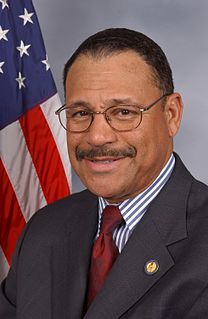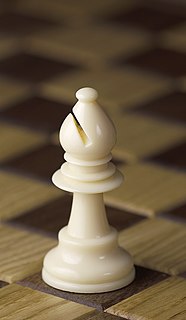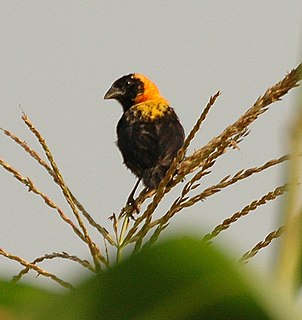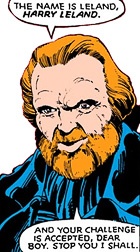This page is based on this
Wikipedia article Text is available under the
CC BY-SA 4.0 license; additional terms may apply.
Images, videos and audio are available under their respective licenses.

The French Defence is a chess opening characterised by the moves:

The African Methodist Episcopal Church, usually called the A.M.E. Church or AME, is a predominantly African-American Methodist denomination. It is the first independent Protestant denomination to be founded by black people. It was founded by the Rt. Rev. Richard Allen in Philadelphia, Pennsylvania, in 1816 from several black Methodist congregations in the mid-Atlantic area that wanted independence from white Methodists. It was among the first denominations in the United States to be founded on racial rather than theological distinctions and has persistently advocated for the civil and human rights of African Americans through social improvement, religious autonomy, and political engagement. Allen, a deacon in Methodist Episcopal Church, was consecrated its first bishop in 1816 by a conference of five churches from Philadelphia to Baltimore. The denomination then expanded west and south, particularly after the Civil War. By 1906, the AME had a membership of about 500,000, more than the combined total of the Colored Methodist Episcopal Church in America and the African Methodist Episcopal Zion Church, making it the largest major African-American Methodist denomination. The AME currently has 20 districts, each with its own bishop: 13 are based in the United States, mostly in the South, while seven are based in Africa. The global membership of the AME is around 2.5 million and it remains one of the largest Methodist denominations in the world.

Sanford Dixon Bishop Jr. is the U.S. Representative for Georgia's 2nd congressional district, serving since 1993. He is a member of the Democratic Party. The district is located in the southwestern part of the state and includes Albany, Thomasville and most of Columbus and Macon.

Checkmate is a game position in chess and other chess-like games in which a player's king is in check and there is no way to remove the threat. Checkmating the opponent wins the game.
In chess, the fianchetto is a pattern of development wherein a bishop is developed to the second rank of the adjacent knight file, the knight pawn having been moved one or two squares forward.

The Diocese of Oxford is a Church of England diocese that forms part of the Province of Canterbury. The diocese is led by the Bishop of Oxford, and the bishop's seat is at Christ Church Cathedral, Oxford. It contains more church buildings than any other diocese and has more paid clergy than any other except London.

The Diocese of London forms part of the Church of England's Province of Canterbury in England.

The Slav Defense is a chess opening that begins with the moves:

The Trompowsky Attack is a chess opening that begins with the moves:

The Diocese of Canterbury is a Church of England diocese covering eastern Kent which was founded by St. Augustine of Canterbury in 597. The diocese is centred on Canterbury Cathedral and is the oldest see of the Church of England.
The Diocese of Bath and Wells is a diocese in the Church of England Province of Canterbury in England.
The Diocese of York is an administrative division of the Church of England, part of the Province of York. It covers the city of York, the eastern part of North Yorkshire, and most of the East Riding of Yorkshire.
The exchange in chess refers to a situation in which one player loses a minor piece but captures the opponent's rook. The side which wins the rook is said to have won the exchange, while the other player has lost the exchange, since the rook is usually more valuable. Alternatively, the side that has won the rook is up the exchange, and the other player is down the exchange. The opposing captures often happen on consecutive moves, although this is not strictly necessary. It is generally detrimental to lose the exchange, although occasionally one may find reason to purposely do so; the result is an exchange sacrifice. The minor exchange is an uncommon term for the exchange of a bishop and knight.
The Diocese of Southwell and Nottingham is a Church of England diocese in the Province of York. It is headed by the Bishop of Southwell and Nottingham. The diocese covers all of the English county of Nottinghamshire and part of South Yorkshire. It is bordered by those of Derby, Leicester, Lincoln, and Sheffield. The cathedral, Southwell Minster, is in the small town of Southwell.
The opposite-colored bishops endgame is a chess endgame in which each side has a single bishop, but the bishops reside on opposite-colored squares on the chessboard, thus cannot attack or block each other. Without other pieces these endings are notorious for their tendency to result in a draw. These are the most difficult endings in which to convert a small material advantage to a win. With additional pieces, the stronger side has more chances to win, but not as many as if the bishops were on the same color.
In chess endgames with a bishop, a pawn that is a rook pawn may be the wrong rook pawn. With a single bishop, the result of a position may depend on whether or not the bishop controls the square on the chessboard on which the pawn would promote. Since a side's rook pawns promote on opposite-colored squares, one of them may be the "wrong rook pawn". This situation is also known as having the wrong-colored bishop or wrong bishop, i.e. the bishop is on the wrong colored squares in relation to the rook pawn. In many cases, the wrong rook pawn will only draw, when any other pawn would win. A fairly common defensive tactic is to get into one of these drawn endgames, often through a sacrifice.

The wrong bishop is a situation in chess endgame when a bishop on the other color of square of the chessboard would either win a game instead of draw or salvage a draw from an inferior position ; in other words, a bishop is unable to guard squares of the other color. This most commonly occurs with a bishop and one of its rook pawns, but it also occurs with a rook versus a bishop, a rook and one rook pawn versus a bishop, and possibly with a rook and one bishop pawn versus a bishop.

In chess, several checkmate patterns occur frequently, or are otherwise of such interest to scholars, so as to have acquired specific names in chess commentary. The diagrams that follow show these checkmates with White checkmating Black.









